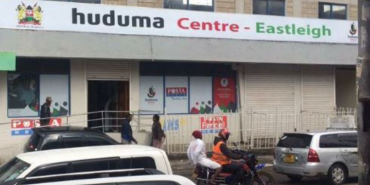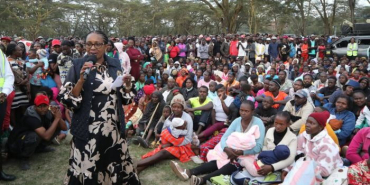Hustler Fund Struggles as Disbursements Plummet, Defaults Rise

The Hustler Fund in Kenya is facing a critical juncture, with disbursements plummeting by 93.3 per cent, from an initial allocation of Sh12 billion to just Sh800 million in the financial year ending June 2024.
This dramatic decrease is closely tied to a rising number of micro-loan defaults that have raised alarms among government officials who are now contemplating stringent measures against defaulters, including the possibility of blacklisting. Launched under President William Ruto’s administration, the Hustler Fund aims to enhance financial inclusion by providing mobile loans ranging from Sh500 to Sh50,000.
The initiative was designed to compete with prominent digital lending platforms such as KCB-M-Pesa and M-Shwari, which are operated by Safaricom and KCB. However, a recent review from the National Treasury indicates that the fund's operational capacity has been severely constrained in its second year.
Cabinet Secretary for Cooperatives, Micro, Small and Medium Enterprises Wycliffe Oparanya acknowledges that the unexpected reduction in disbursements stemmed from financial constraints during the last budget cycle, resulting in only Sh2 billion being released thus far. Principal Secretary Susan Mang'eni attributes the challenges to competing budget priorities, particularly recovery initiatives following devastating floods.
“The funding shortfall has affected development projects, including the Hustler Fund,” Oparanya says.
While Mang’eni suggests that reduced disbursements should not be viewed solely as a failure of the Fund's structure, the increasing rate of borrower defaults substantially complicates recovery operations. Oparanya points out the strict repayment policy that disallows borrowers with outstanding debts from accessing new loans, regardless of the amount owed.
He expresses cautious optimism regarding the Fund's future recovery capabilities despite the adverse conditions. As of January 2025, a total of Sh500 million had been disbursed from an allocated Sh5 billion for the new financial year, indicating some ongoing operation, albeit at significantly reduced levels.
The Hustler Fund’s implementation has also been met with political challenges, particularly resistance during 2023 anti-government protests that discouraged loan repayments. Looking ahead, the future of the Hustler Fund may hinge on proposed plans to increase loan limits to Sh1 million for borrowers with satisfactory repayment records, eliminating collateral requirements.
However, the government's ambition of a yearly Sh50 billion allocation was scaled back to Sh20 billion, ultimately approving only Sh5 billion for the current budget. Despite having offered significant credit to approximately 22 million borrowers since its inception, the sustained decline in performance and ongoing dependency on public funds remain substantial issues.
Government is now seeking to engage the private sector to mitigate fiscal challenges and maintain commitments aligned with International Monetary Fund (IMF) guidelines.








Add new comment